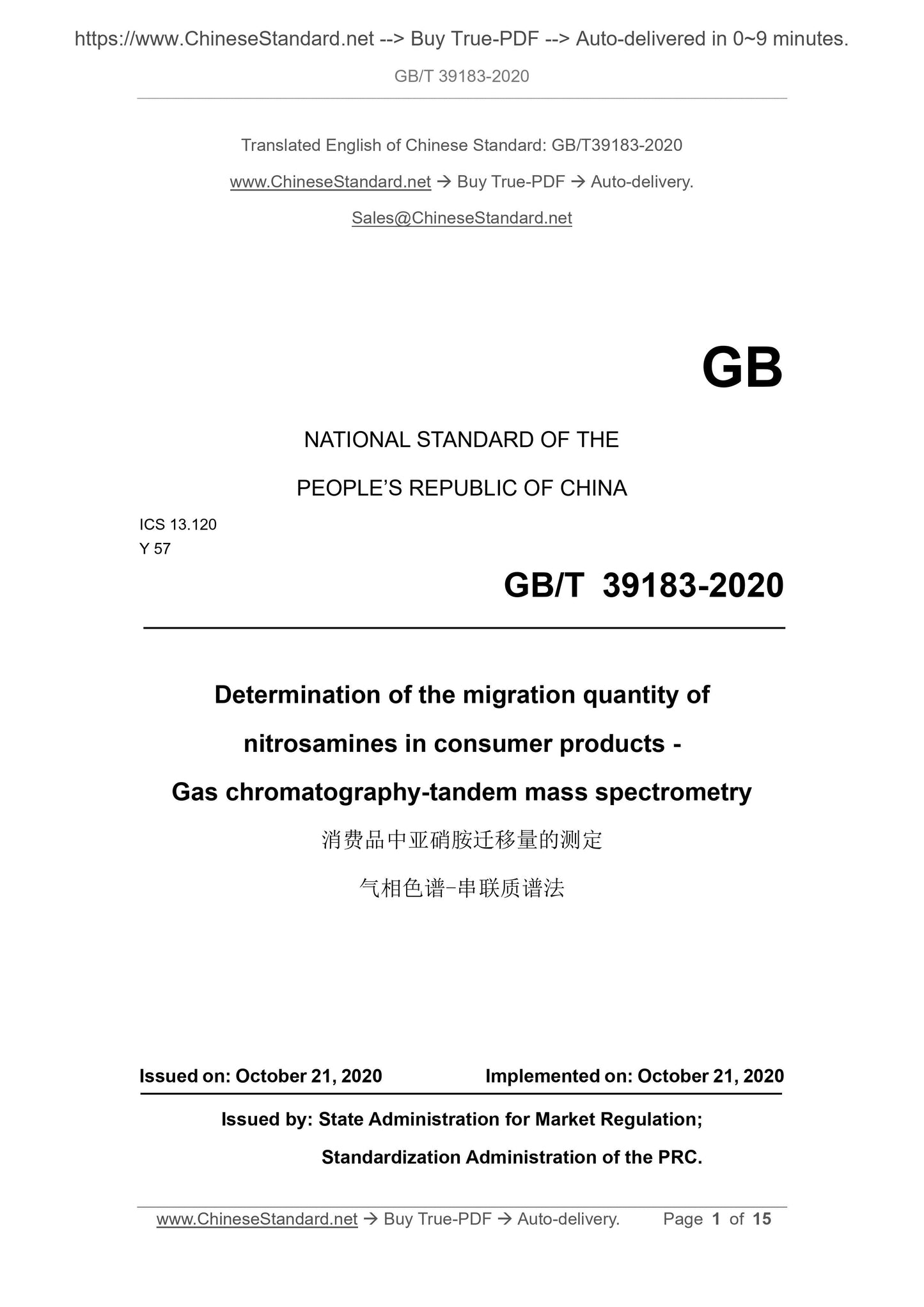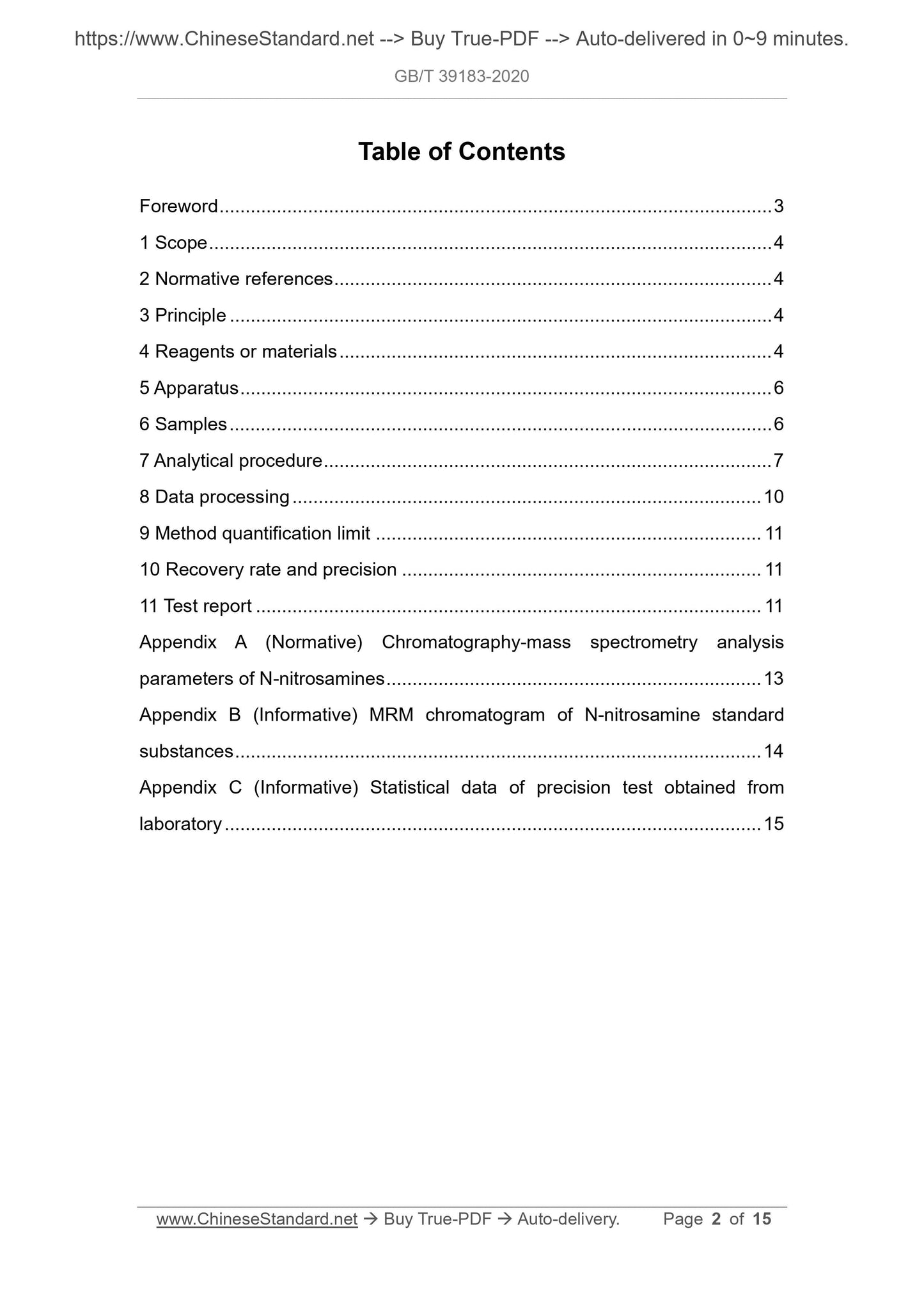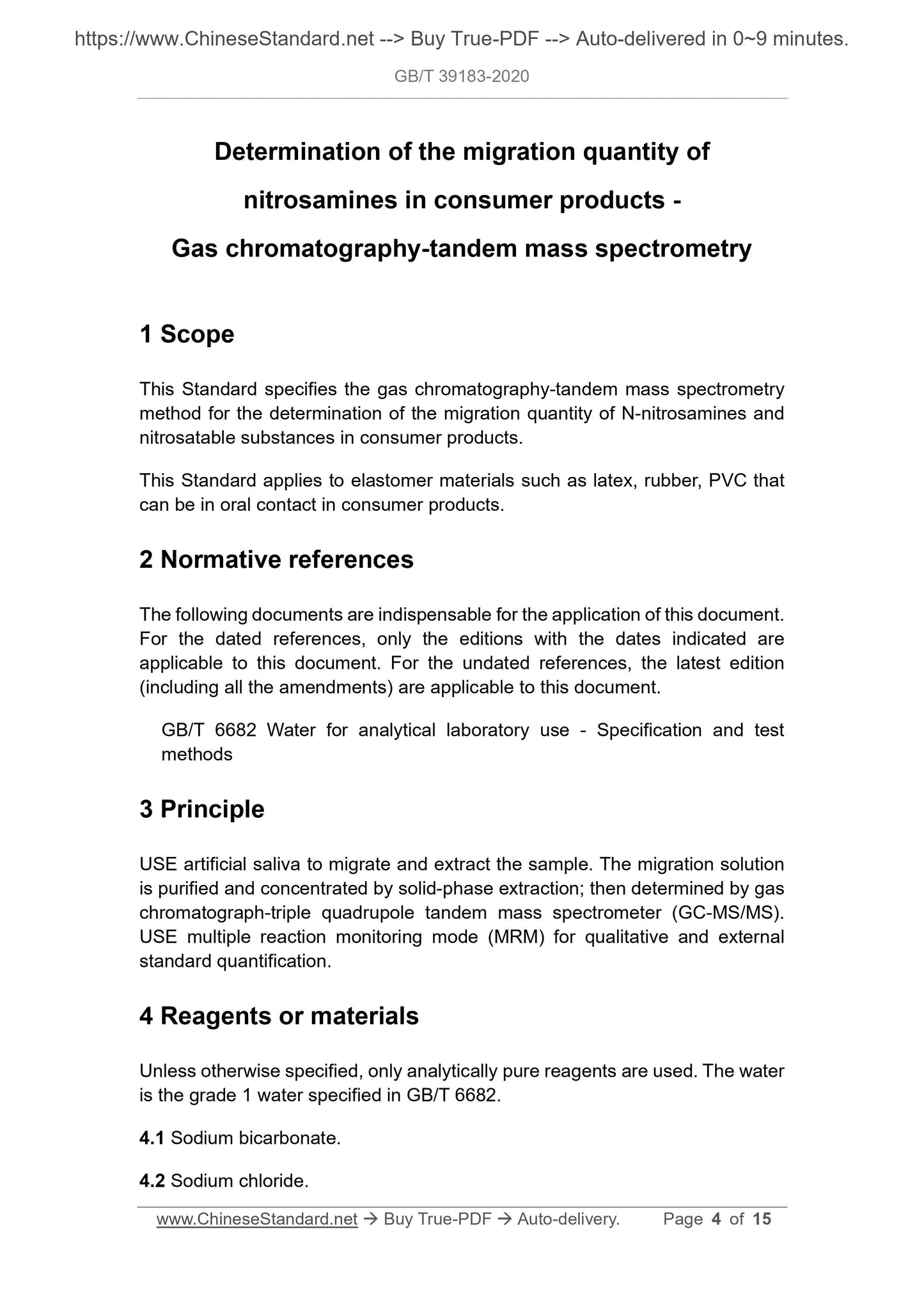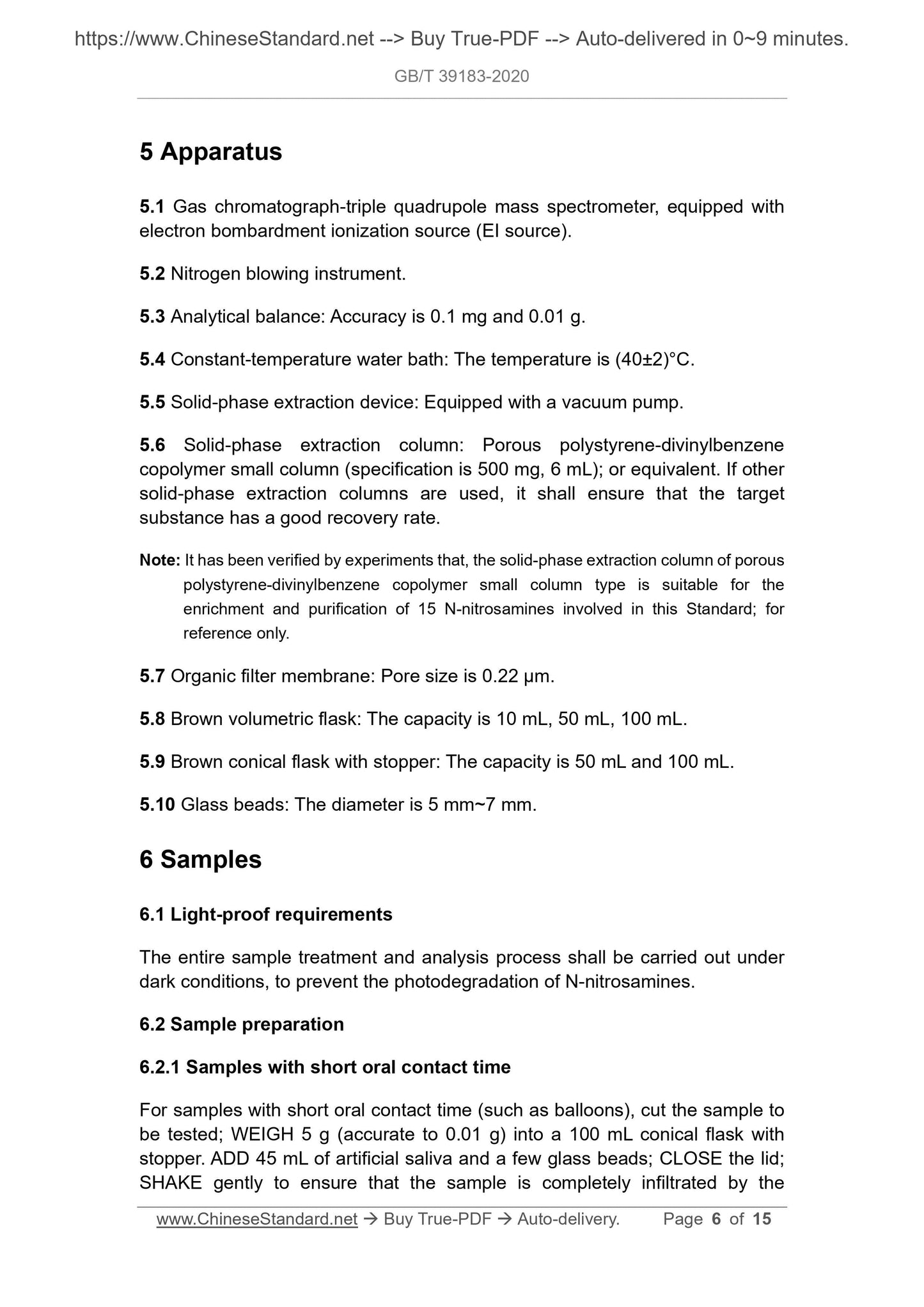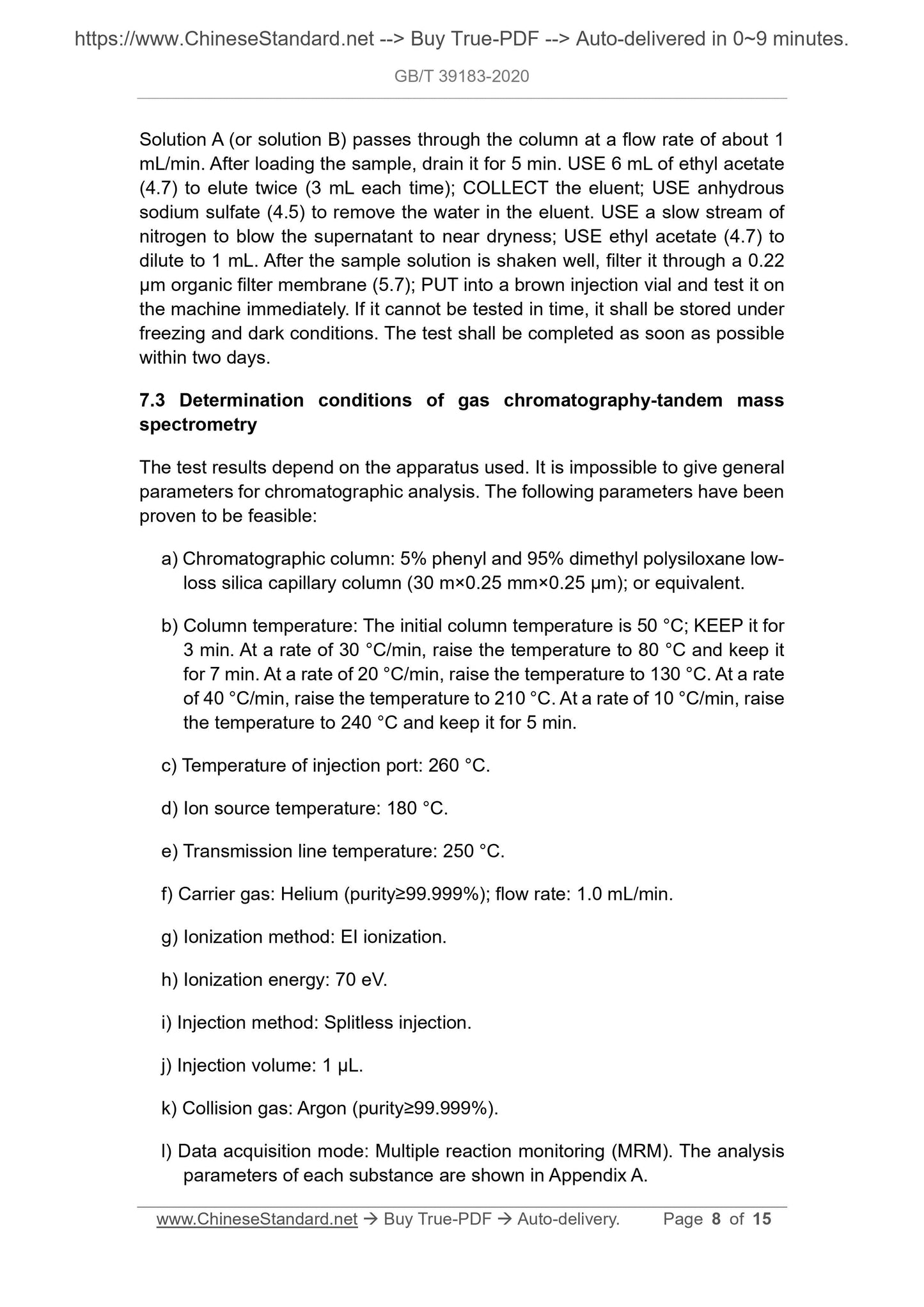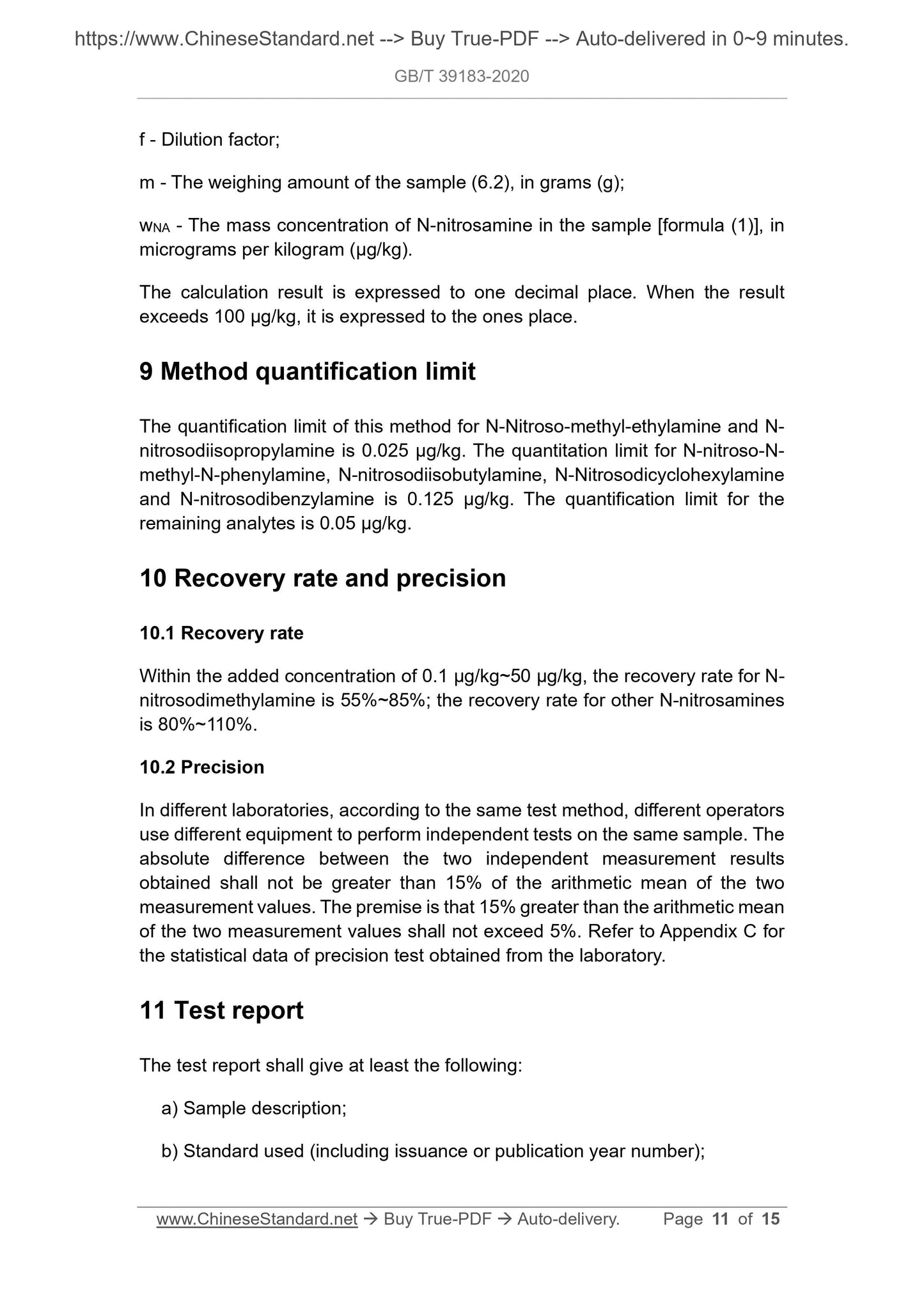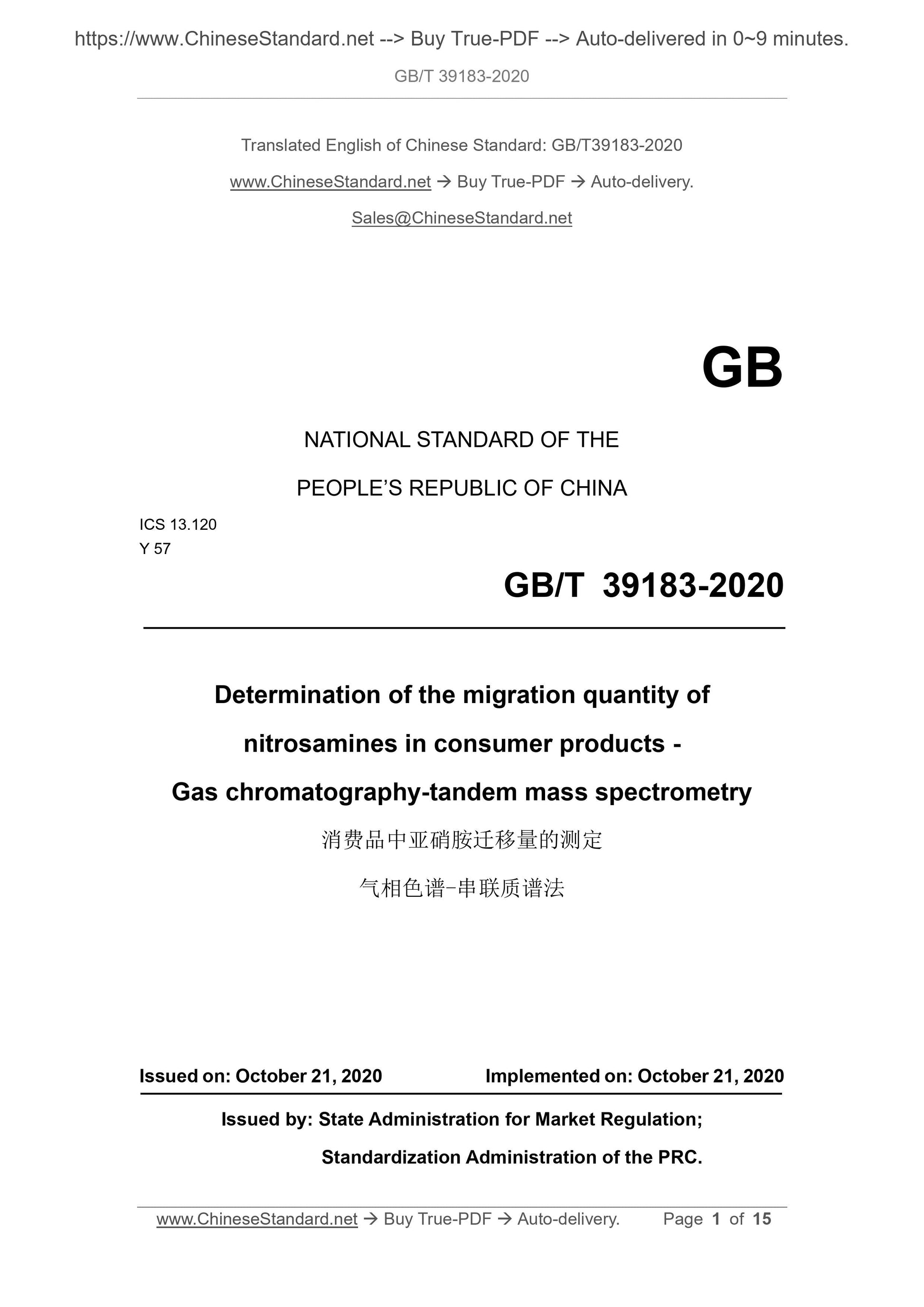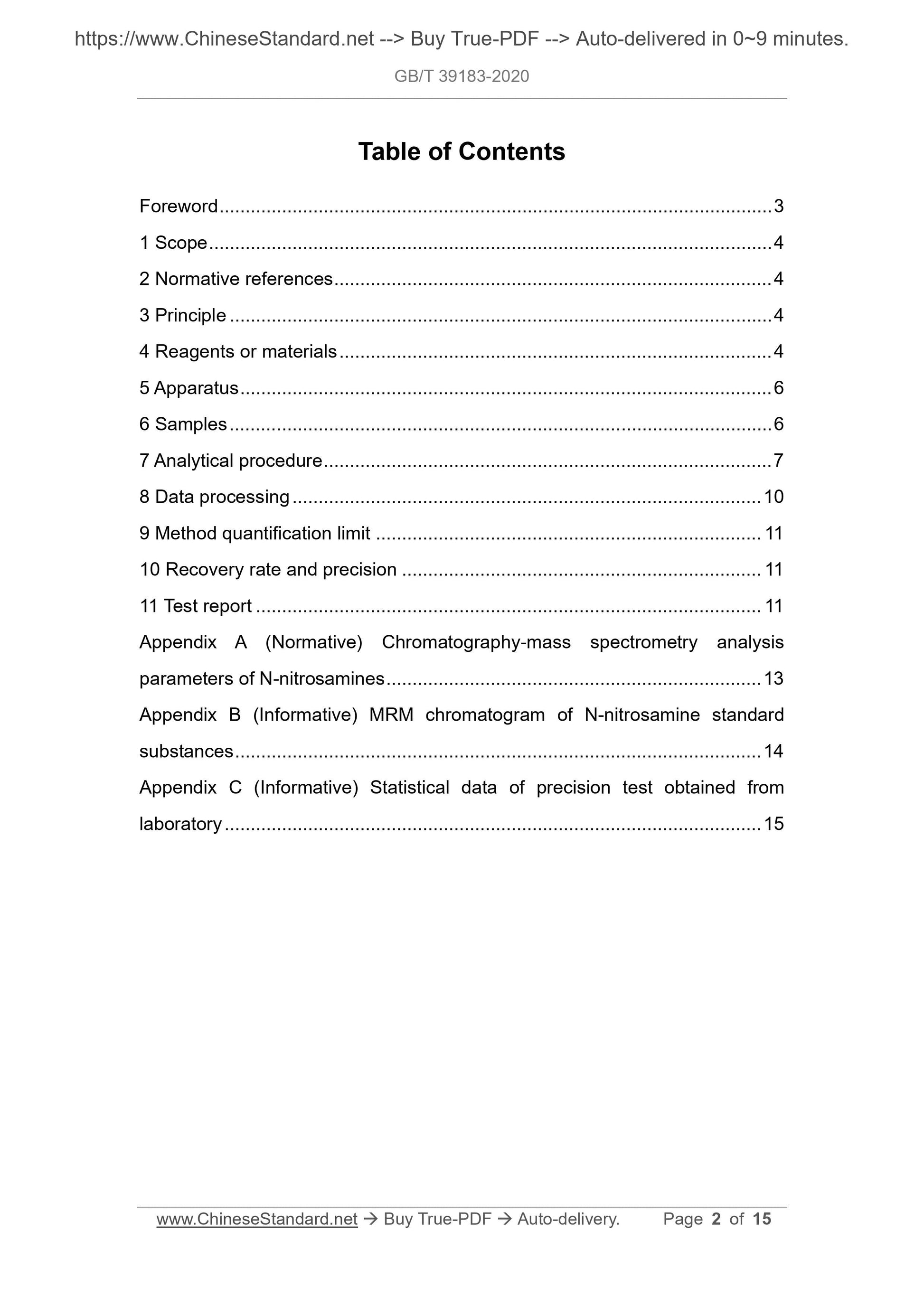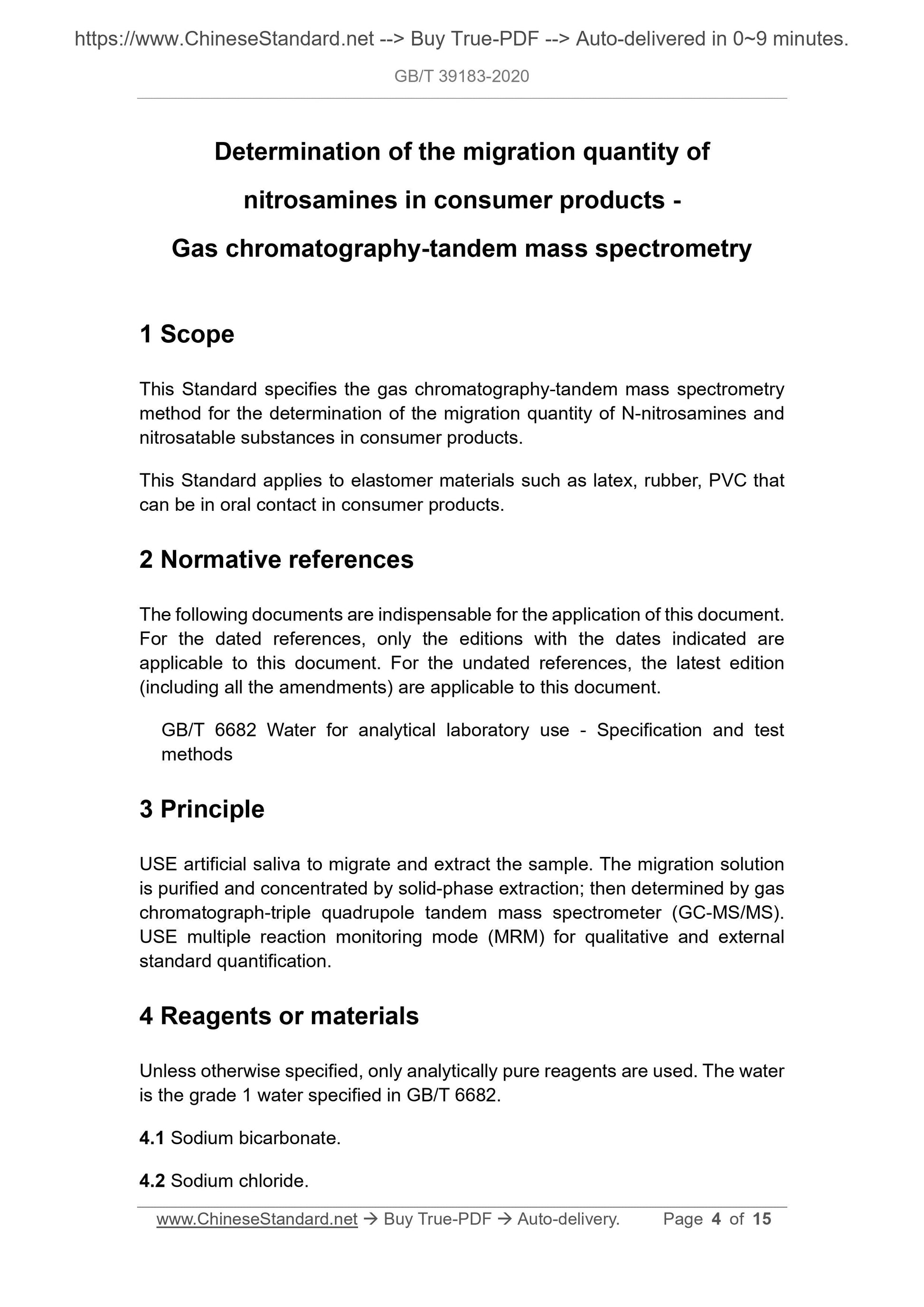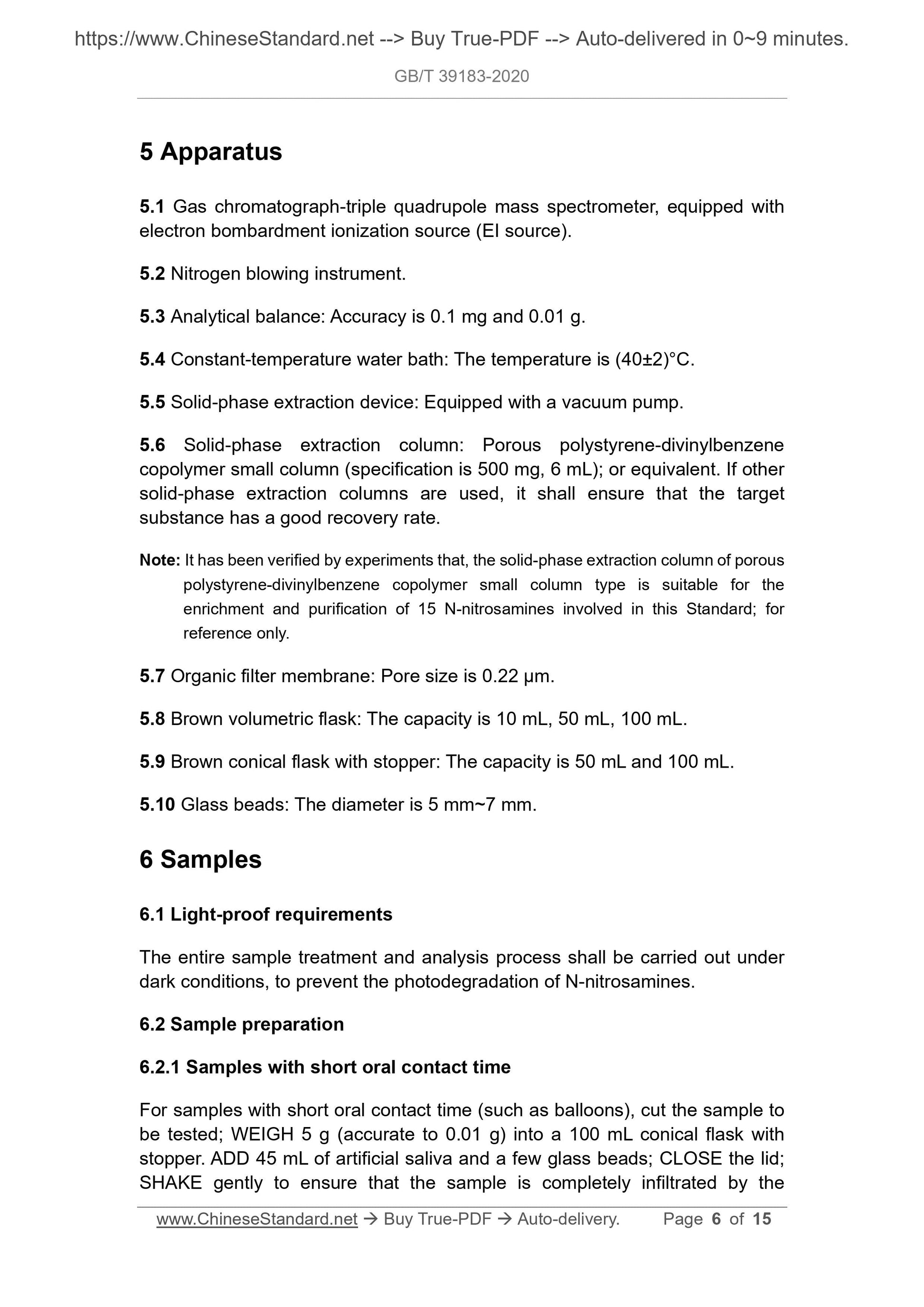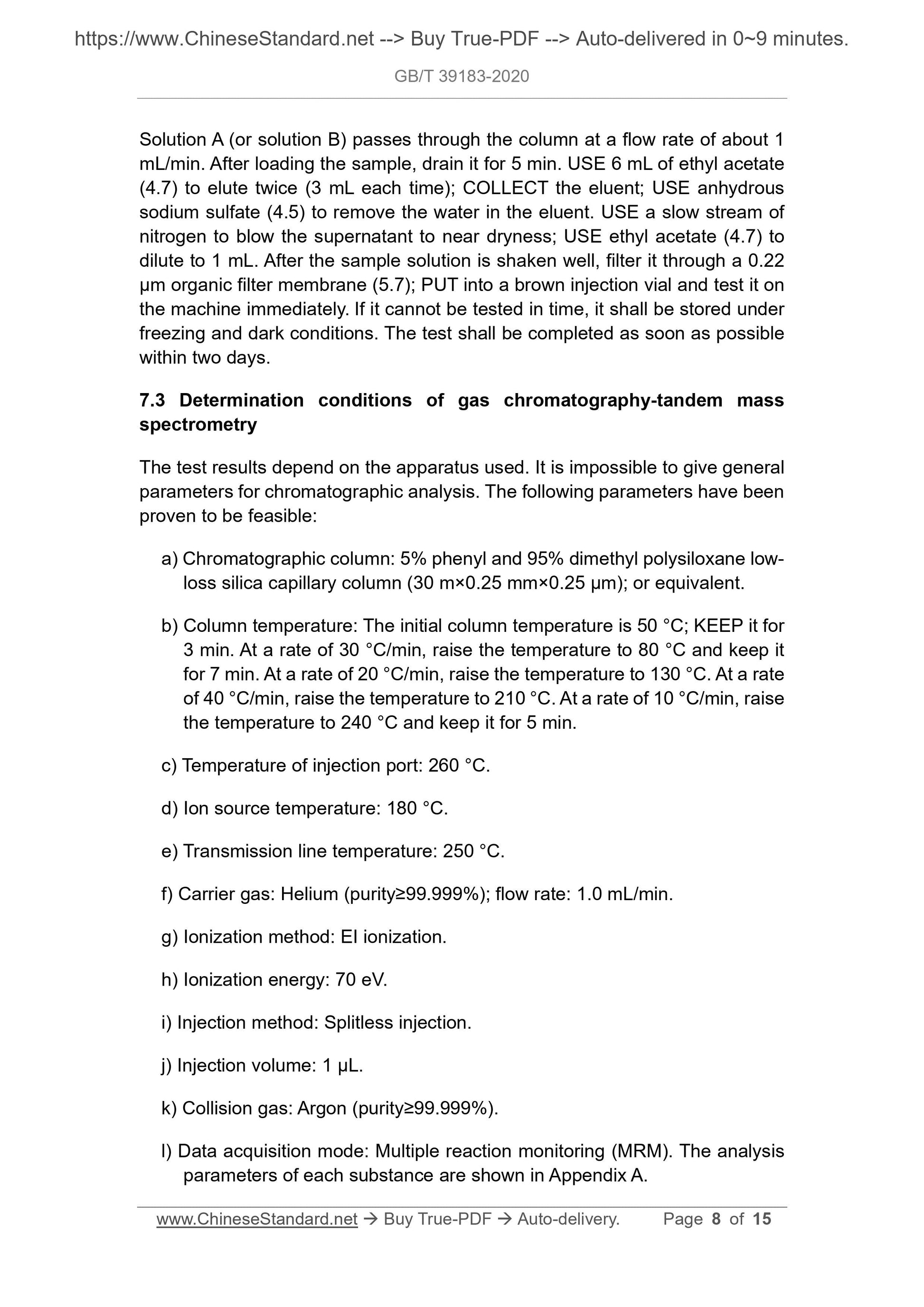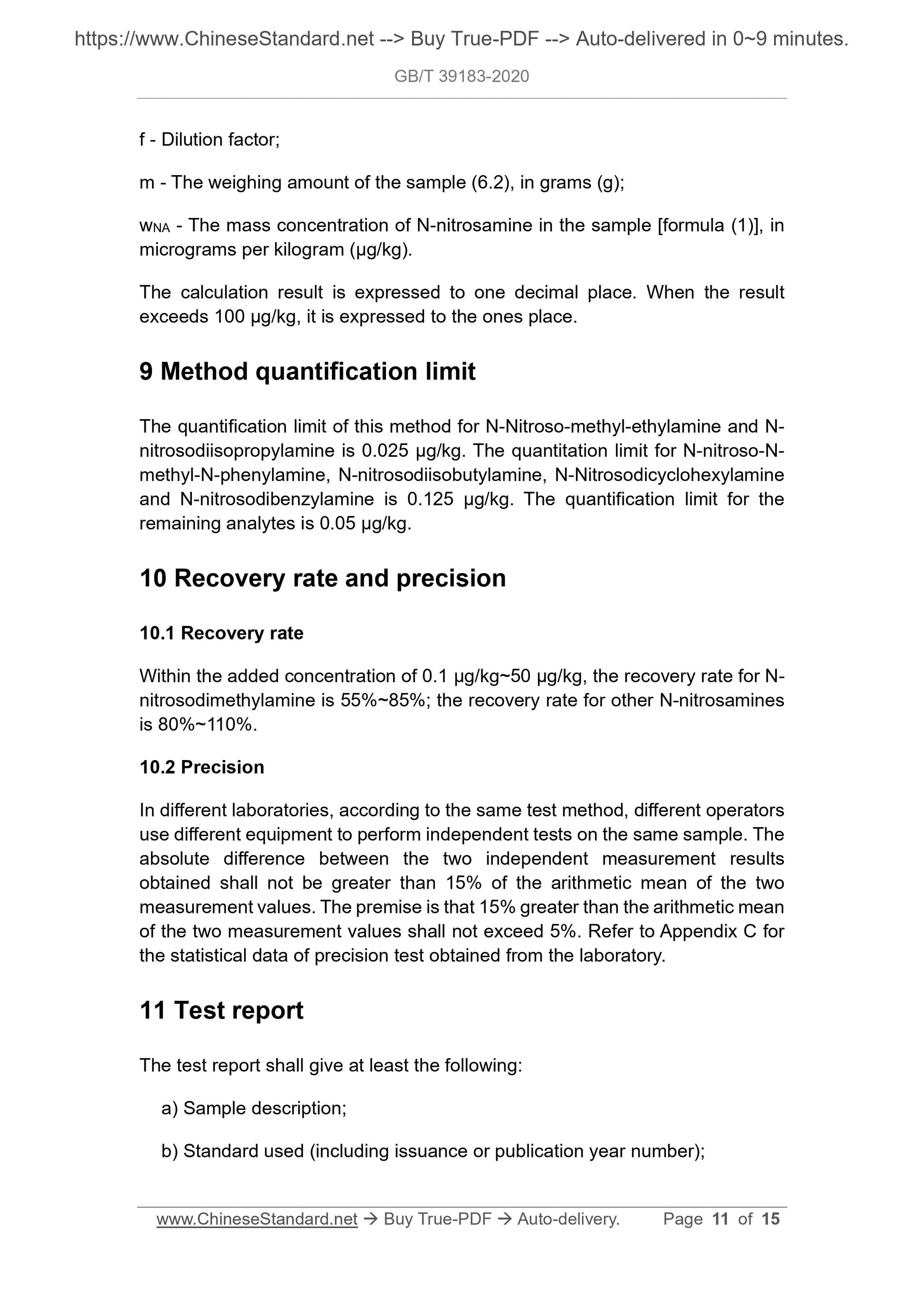1
/
of
6
www.ChineseStandard.us -- Field Test Asia Pte. Ltd.
GB/T 39183-2020 English PDF (GB/T39183-2020)
GB/T 39183-2020 English PDF (GB/T39183-2020)
Regular price
$155.00
Regular price
Sale price
$155.00
Unit price
/
per
Shipping calculated at checkout.
Couldn't load pickup availability
GB/T 39183-2020: Determination of the migration quantity of nitrosamines in consumer products - Gas chromatography-tandem mass spectrometry
Delivery: 9 seconds. Download (and Email) true-PDF + Invoice.Get Quotation: Click GB/T 39183-2020 (Self-service in 1-minute)
Newer / historical versions: GB/T 39183-2020
Preview True-PDF
Scope
This Standard specifies the gas chromatography-tandem mass spectrometrymethod for the determination of the migration quantity of N-nitrosamines and
nitrosatable substances in consumer products.
This Standard applies to elastomer materials such as latex, rubber, PVC that
can be in oral contact in consumer products.
Basic Data
| Standard ID | GB/T 39183-2020 (GB/T39183-2020) |
| Description (Translated English) | Determination of the migration quantity of nitrosamines in consumer products - Gas chromatography-tandem mass spectrometry |
| Sector / Industry | National Standard (Recommended) |
| Classification of Chinese Standard | Y57 |
| Classification of International Standard | 13.120 |
| Word Count Estimation | 10,186 |
| Date of Issue | 2020-10-21 |
| Date of Implementation | 2020-10-21 |
| Regulation (derived from) | National Standard Announcement No. 22 of 2020 |
| Issuing agency(ies) | State Administration for Market Regulation, China National Standardization Administration |
Share
